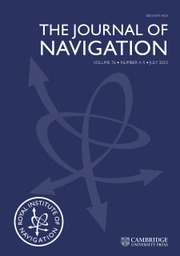Article contents
Enhancing the function of the aids to navigation by practical usage of the deep learning algorithm
Published online by Cambridge University Press: 13 January 2025
Abstract
Information is provided to navigators through advanced onboard navigation equipment, such as the electronic chart display and information system (ECDIS), radar and the automatic identification system (AIS). However, maritime accidents still occur, especially in coastal and inland water where many navigational dangers exist. The recent artificial intelligence (AI) technology is actively applied in navigation fields, such as collision avoidance and ship detection. However, utilising the aids to navigation (AtoN) system requires more engagement and further exploration. The AtoN system provides critical navigation information by marking the navigation hazards, such as shallow water areas and wrecks, and visually marking narrow passageways. The prime function of the AtoN can be enhanced by applying AI technology, particularly deep learning technology. With the help of this technology, an algorithm could be constructed to detect AtoN in coastal and inland waters and utilise the detected AtoN to create a safety function to supplement watchkeepers using recent navigation equipment.
Information
- Type
- Research Article
- Information
- Copyright
- Copyright © The Author(s), 2025. Published by Cambridge University Press on behalf of The Royal Institute of Navigation
References
- 1
- Cited by


